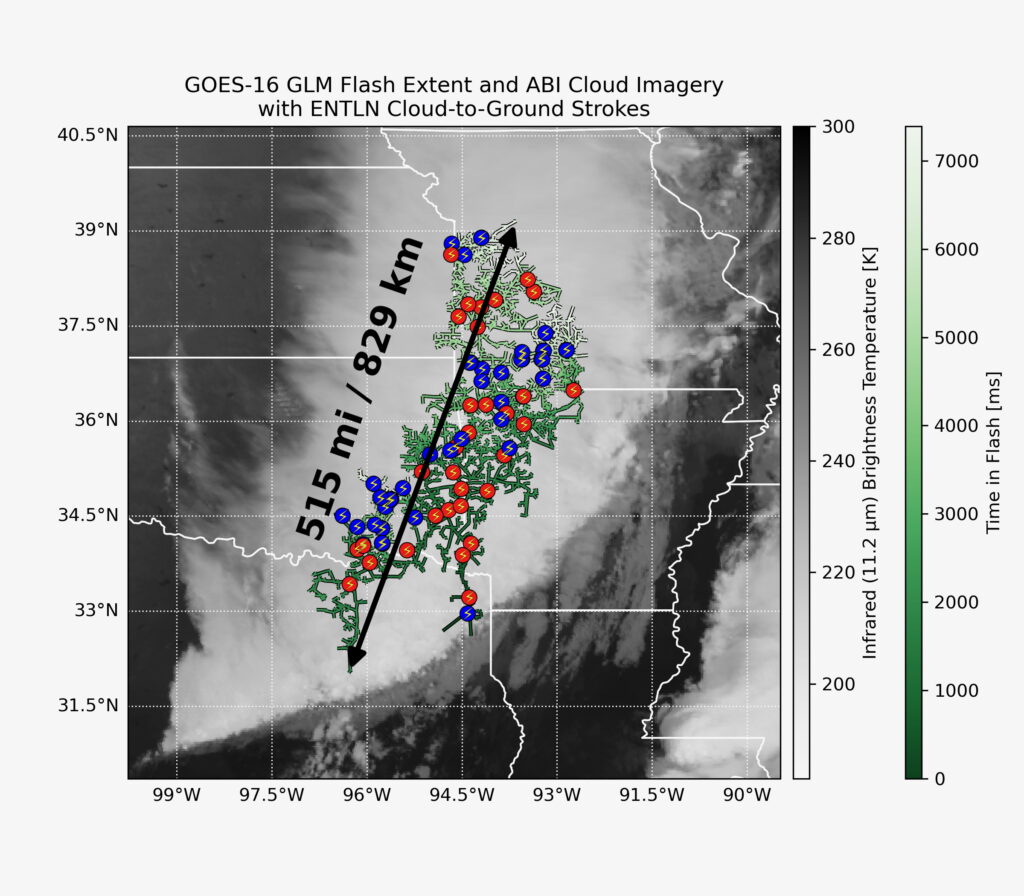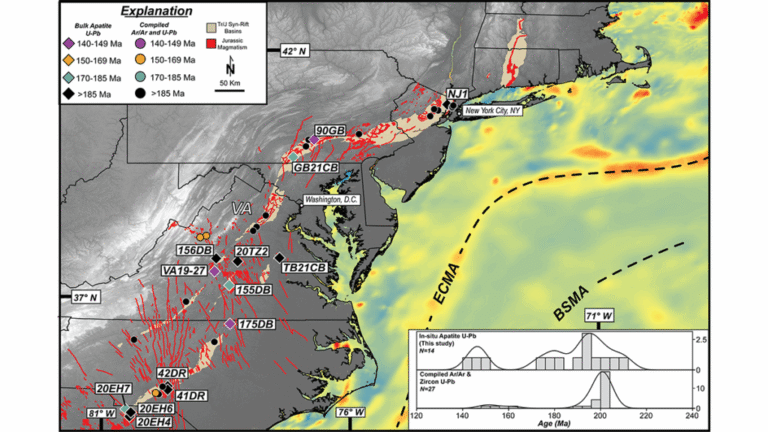

Research & Developments is a blog for brief updates that provide context for the flurry of news that impacts science and scientists today.
515 miles—roughly the distance from Washington, D.C. to Detroit, one-third the length of the Colorado River, and now, the longest lightning bolt ever recorded.
That’s right: A new analysis of satellite data has revealed that a 22 October 2017 storm over the U.S. Midwest created a lightning bolt that reached 829 kilometers (515 miles), from eastern Texas to nearly Kansas City. The record-setting bolt lasted about 7 seconds.
The record was certified by the World Meteorological Organization (WMO), the weather agency of the United Nations, and entered into their World Weather and Climate Extremes Archive.
Researchers discovered the lightning bolt while analyzing lightning detection data from NOAA’s GOES-16 satellite. They published their findings in the Bulletin of the American Meteorological Society today.

The 515-mile-long bolt is considered a megaflash, which refers to lightning that reaches at least 100 kilometers (62 miles). Megaflashes extend through the clouds, initiating hundreds of cloud-to-ground bolts along the way. The flash from the 2017 storm created more than 116 cloud-to-ground offshoots seen in the above map as blue and red dots.
Less than 1% of storms create megaflash lightning; most flashes reach less than 16 kilometers (10 miles).
Still, most people don’t realize how far from a storm lightning can strike. “The storm that produces a lightning strike doesn’t have to be over top of you,” Randy Cerveny, a geographer at Arizona State University and coauthor of the new report, said in a press release.
Historically, scientists have detected lightning using ground-based networks that estimate location and speed based on the time it takes radio signals emitted by lightning to reach antennas. Satellite-based lightning detectors are a relatively recent addition to atmospheric scientists’ toolkit, and allow researchers to detect lightning continuously on continent-scale distances.
The previous record certified by the WMO was a flash over the southern United States and the Gulf of Mexico measured by satellite sensors to be 768 kilometers (477 miles) long.
“It is likely that even greater extremes still exist, and that we will be able to observe them as additional high-quality lightning measurements accumulate over time,” Cerveny said.
—Grace van Deelen (@gvd.bsky.social), Staff Writer
These updates are made possible through information from the scientific community. Do you have a story idea about science or scientists? We’re listening! Send us a tip at eos@agu.org.

Text © 2025. AGU. CC BY-NC-ND 3.0
Except where otherwise noted, images are subject to copyright. Any reuse without express permission from the copyright owner is prohibited.


